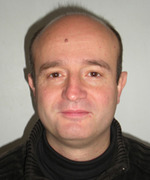The ever increasing pressure to reduce production test costs of highly integrated devices is today leading to the adoption
of design-for-test techniques for most common mixed-signal/RF circuits. In addition to classical techniques for facilitating
access to embedded components, built-in test techniques have gained acceptance despite the additional costs in terms of silicon
overhead and test errors. These advanced techniques may include on-chip test structures to monitor circuit performance while
alleviating the complexity of test equipment or complete built-in self-test techniques.
The lecture starts by reviewing the fundamentals of mixed-signal/RF design-for-test, including the classical techniques
for facilitating access to embedded modules and the basic principles for on-chip test signal generation and test response
analysis. An evaluation of test quality at the design stage is essential for choosing specific built-in test structures. The
traditional approach for digital circuits based on the use of fault models and fault simulation is not feasible for most common
mixed-signal/RF devices. Instead, the lecture presents statistical techniques for the estimation of parametric test metrics.
Statistical learning is also at the origin of indirect test techniques. This generic approach aims at inferring the outcome
of standard specification-based tests from a set of low-cost measurements provided by embedded test structures, sensors or
monitors, that are easy to integrate and ideally transparent to device functionality. Furthermore, embedded sensors can also
be used to enhance device yield and performance. The lecture illustrates the use of statistical learning for the test and
control of mixed-signal/RF devices.
Finally, the lecture will present advanced built-in test techniques for most common mixed-signal devices, including converters,
PLLs, RF circuits, and MEMS devices.
- Introduction
- Analog versus digital test
- Test metrics
- Fault modeling, characterization and diagnosis
- The cost of test
- Design-for-test principles
- Analog test access
- Mixed-signal boundary scan
- Built-in self-test
- On-chip test signal generation
- On-chip response analysis
- Loopback tests
- Density estimation for parametric test metrics estimation
- Gaussian model
- Copulas Theory
- Non-parametric kernel-based density estimation
- Extreme Value Theory
- Statistical learning for test optimization and control
- Indirect test using regression-based techniques
- Test ordering and compaction
- Embedded control using parameter identification
- Advanced built-in test techniques
- ADC/DAC
- PLL
- RF
- MEMS and sensors
A basic understanding of VLSI design and test concepts is
assumed. Some knowledge of mixed-signal circuits
(converters, PLLs) and RF circuits (low noise amplifiers and
mixers) will be helpful for a complete understanding of the
advanced design-for-test techniques. The statistical
learning techniques will be treated from a user’s point of
view, requiring only a basic knowledge of statistics.
The lecture is intended to provide an introduction to the
field of mixed-signal/RF design-for-test. The audience will
first learn fundamental principles, while advanced
techniques for most common devices will be illustrated next.
Statistical learning techniques which are today widely
researched in this field will also be illustrated, including
probability density estimation, regression and parameter
identification.

